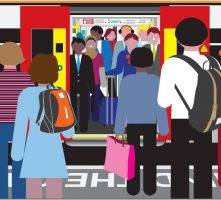September 2, 2016
Learning with a stranger as effective as learning with a close friend or relation 0
 A partner helps you learn – even if you don’t know them. That is the conclusion of research being presented today by Catherine Crompton from the University of Edinburgh to the annual conference of the British Psychological Society’s Cognitive Psychology Section in Barcelona. In the research for her PhD, Catherine carried out two studies that each paired 48 people and asked them to learn an unfamiliar task. In both studies, half the pairs knew each other and half did not. Both older and younger participants were tested, each paired with a partner of similar age. In the first study, the pairs were asked to arrange abstract tangram shapes in a specific order on a grid. In the second, the pairs were asked to learn a route on a map and then recall it one hour and one week later. The first study showed that the pairs got better at the task with practice, whether or not the pairs had known each other before the study. The effects were the same, regardless of age.
A partner helps you learn – even if you don’t know them. That is the conclusion of research being presented today by Catherine Crompton from the University of Edinburgh to the annual conference of the British Psychological Society’s Cognitive Psychology Section in Barcelona. In the research for her PhD, Catherine carried out two studies that each paired 48 people and asked them to learn an unfamiliar task. In both studies, half the pairs knew each other and half did not. Both older and younger participants were tested, each paired with a partner of similar age. In the first study, the pairs were asked to arrange abstract tangram shapes in a specific order on a grid. In the second, the pairs were asked to learn a route on a map and then recall it one hour and one week later. The first study showed that the pairs got better at the task with practice, whether or not the pairs had known each other before the study. The effects were the same, regardless of age.


































August 31, 2016
Addressing the five negative influences on organisational culture 0
by Matias Rodsevich • Comment, Flexible working, Knowledge, Workplace
(more…)